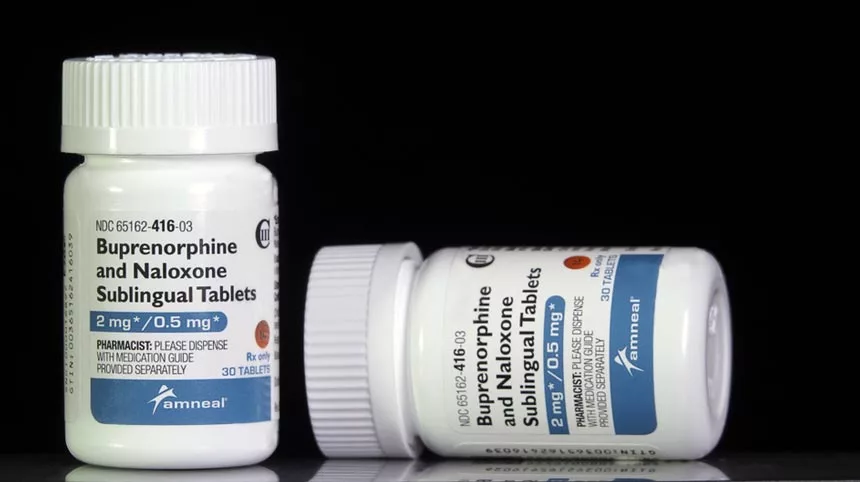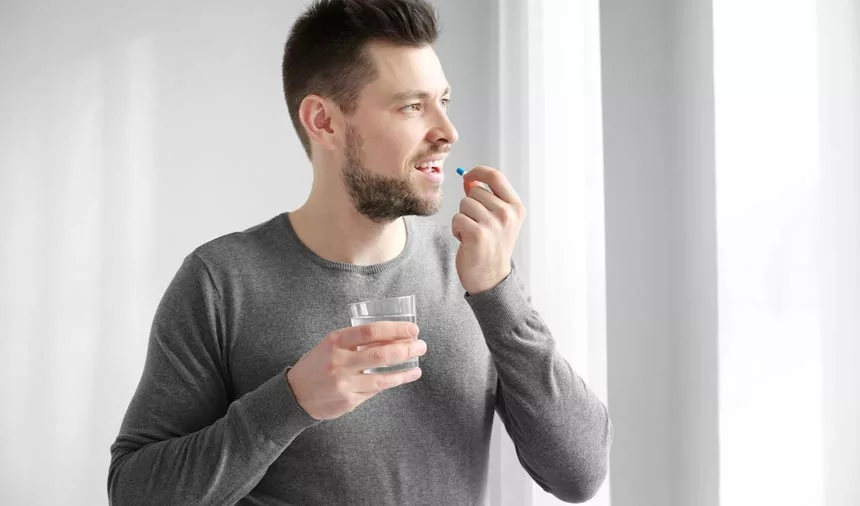What Does Bup Drug Test Mean?
Table of Contents
- What Does Bup Drug Test Mean?
- What is Buprenorphine Used For?
- Why Drug Tests Screen for Buprenorphine
- Understanding Buprenorphine Abuse
- Using Drug Tests to Combat Opioid Addiction
- The Dangers of Abusing Your Buprenorphine Prescription
- Treating Buprenorphine Addiction
- Find Addiction Treatment and Get Help Here!
- FAQs About a Bug Drug Test
Drug tests have become more and more commonplace in many settings, including workplaces, court systems, and treatment programs. Many of these standard 12-panel drug tests will have a label with the abbreviation “BUP” on it.
For those who are unaware, BUP refers to the medication buprenorphine, which is commonly used to treat opioid use disorder. So, if someone has recently ingested buprenorphine, or a medication containing this drug, they will receive a positive result.
Keep reading to learn more about drug testing, ‘bup drug test’ details, how taking buprenorphine can affect you, and how you can find help to overcome your drug abuse or addiction today.
What is Buprenorphine Used For?

Buprenorphine is a part of Suboxone (along with Naltrexone) and is an FDA-approved medication that is frequently used in various addiction treatment services and rehabilitation programs. This medication can be used to treat addiction to other opiates, such as heroin, morphine, oxycodone, and other drugs,
Buprenorphine is commonly used in substitution treatment, where the recovering individual is gradually weaned off of an abused opiate while using buprenorphine to help manage withdrawal symptoms and cravings.
Other medications used in substitution therapy and to treat opioid misuse include methadone, naloxone, benzodiazepines, and suboxone, which is a buprenorphine-naloxone combination.
Why Drug Tests Screen for Buprenorphine
Most drug tests will be used for the detection of more intense and illicit drugs. Generally, drug testing will include taking a urine sample, which will be sent to a laboratory and screened for any potentially harmful substances that may affect the safety of the user or those around them.
Understanding Buprenorphine Abuse
Buprenorphine itself is often referred to as Subutex and is an opioid medication used to treat opioid addiction and chronic pain. It has been found to be an effective treatment for managing opioid withdrawal symptoms and reducing the risk of relapse. However, it is also subject to abuse.
Buprenorphine is a powerful opioid drug and can be abused in a number of ways. It may be taken orally, snorted, or injected. When abused orally, it is often taken in higher doses or more often than prescribed.
People may also choose to crush and snort or inject this drug, which causes a faster and more intense high. However, this method of use is also more dangerous, increasing the individual’s risk of overdose.
Buprenorphine abuse has become increasingly common as it has become more widely available. People who are typing to overcome another opiate dependence may turn to buprenorphine in an attempt to ease their withdrawal symptoms.
Unfortunately, this can end up leading to an even more severe addiction. In some cases, people may also abuse buprenorphine to get high or self-medicate other mental health issues that they may have. Both Subutex and Suboxone addictions can, and do, happen.
Using Drug Tests to Combat Opioid Addiction

Drug testing has become an increasingly popular way to combat addiction in recent years. With the rise in drug use, employers and other organizations have adopted the practice of testing individuals for the presence of drugs in their bodies in order to ensure that they are not in a position to harm themselves or others.
The primary purpose of drug testing is to detect and prevent drug use among those in positions of responsibility, such as in the workplace or in schools. Employers have the legal right to require drug testing of their employees and can do so as part of a pre-employment process, or as part of an ongoing addiction prevention program.
The results of drug tests can help employers determine if an employee is using drugs and if so, take appropriate action. In addition to the workplace, drug testing is also used in the criminal justice system.
Why is Drug Testing So Common?
Drug testing is used to determine if someone has been using drugs in the past, and to determine the level of drug use of an individual. It is also used to monitor individuals who are on probation or parole to make sure they are not using drugs. If you have failed a drug test, the best defense for a positive drug test is often honesty, with a commitment to changing behaviors.
Drug testing can also be used to combat addiction by providing an incentive to encourage individuals to stay away from drugs. If an individual is regularly tested and found to be drug-free, they may be rewarded with a bonus or other incentive.
This reward can serve as an incentive to encourage individuals to remain drug-free and is a great way to make sure that those who may be vulnerable to drug use remain clean.
Overall, drug testing has become an important tool to combat addiction and ensure that those in positions of responsibility do not use drugs. It is a powerful resource for providing incentives for those who choose to stay safe and drug-free.
The Dangers of Abusing Your Buprenorphine Prescription
While taking a normal prescribed dose of buprenorphine is considered to be generally safe when it has been prescribed by a doctor, there are many dangers associated with improper drug use.
Short-Term Side Effects
The physical effects of buprenorphine abuse can be serious. It can cause difficulty breathing, nausea, vomiting, confusion, and unconsciousness. Overdose is also a possibility, as are dangerous interactions with other drugs.
Long-Term Side Effects
Long-term abuse of buprenorphine can lead to physical and psychological dependence. People who become dependent on buprenorphine can experience withdrawal symptoms if they suddenly stop taking it.
Treating Buprenorphine Addiction

Treating buprenorphine addiction requires a comprehensive approach, in which medical and behavioral interventions are combined to provide a whole-health recovery. The first step in treating opioid abuse and addiction is to be assessed by your treatment provider.
Your treatment team will determine the severity of your addiction, and whether you have any co-occurring mental or medical conditions that may complicate the recovery process. Once this is done, most people will begin their recovery process with a medical detox program.
Detoxification is a process in which the body is allowed to rid itself of the drug and the associated withdrawal symptoms. It is important to note that detoxification alone is not enough to treat buprenorphine addiction on the whole
Treating buprenorphine addiction requires a comprehensive approach that includes both medical and behavioral interventions. The first step in treating buprenorphine addiction is detoxification.
What are the Reasons to Choose a Medical Detox for Opioids?
Detoxification is a process in which the body is allowed to rid itself of the drug and the associated withdrawal symptoms. It is important to note that detoxification alone is not enough to treat buprenorphine addiction.
Once detoxification is complete, other treatments such as counseling and medication may be necessary in order to maintain sobriety. Behavioral therapy is an important form of treatment for buprenorphine addiction.
Therapy can provide important insight into the causes of the addiction and help the person learn new coping skills and strategies for managing cravings. Therapists can also help individuals develop healthy strategies for dealing with stress and other triggers that may lead to relapse.
It is important not to be limited when it comes to your support system. Finally, it is important to remember that recovery from buprenorphine addiction is a lifelong process. Maintaining sobriety requires ongoing effort and support from family and friends.
Recovery support groups can also provide invaluable assistance in navigating the recovery process and staying on track and moving from a negative to a positive recovery mindset.
Treating buprenorphine addiction is possible, but it requires a comprehensive approach that includes medical, behavioral, and social support. With the right treatment plan, habitual drug users can learn to manage their addiction and lead healthy and fulfilling lives.
Find Addiction Treatment and Get Help Here!
If you or a loved one is struggling with drug or alcohol abuse and want to get clean, the Find Addiction Rehabs team is here to help. You can call our 24/7 hotline anytime, any day to find recovery resources and addiction treatment programs nationwide!
The only person who can make the choice to get help is you. So make the right one, and call now to take the first step on your road to sobriety, today!
FAQs About a Bug Drug Test
How Much Buprenorphine Is Too Much?
The answer to how much buprenorphine is too much depends on a few factors, such as the person’s age, weight, individual metabolism, and any other drugs they may be taking. A normal dose of buprenorphine is around 10 ng ml.
Generally, an adult should not take more than 32 milligrams of buprenorphine in a day. Taking more than this amount can result in an overdose and can be fatal. When taking buprenorphine, it is important to start at low doses and gradually increase this amount slowly over time.
Excessive buprenorphine use can lead to an overdose, which can cause respiratory depression and other potentially life-threatening complications.
Can Buprenorphine Be Taken Daily?

The question of whether or not buprenorphine can be taken daily is a common one. The answer is yes, buprenorphine can be taken daily. Buprenorphine can be taken as a daily medication to help manage opioid addiction.
It is important to note that buprenorphine, like other opioids, should only be taken as prescribed by a doctor. Taking too much medication can cause serious health problems.
How Long Does Buprenorphine Stay in the System?
Buprenorphine has a long half-life, meaning that it takes the body a long time to process and eliminate the drug from the system. The half-life of buprenorphine is about 24 to 42 hours, and it can take up to 72 hours for the drug to be completely eliminated from the body.
The length of time that buprenorphine stays in the system can vary depending on several factors, including age, weight, metabolism, and other underlying health conditions.
It is important to note that buprenorphine can be detected in the system for up to 10 days after the last use. Therefore, it is important to be mindful of when buprenorphine was last used when considering drug testing.
Edward lives and works in South Florida and has been a part of its recovery community for many years. With a B.A. in English Literature from the University of Massachusetts, he works to help Find Addiction Rehabs as both a writer and marketer. Edward loves to share his passion for the field through writing about addiction topics, effective treatment for addiction, and behavioral health as a whole. Alongside personal experience, Edward has deep connections to the mental health treatment industry, having worked as a medical office manager for a psychiatric consortium for many years.

